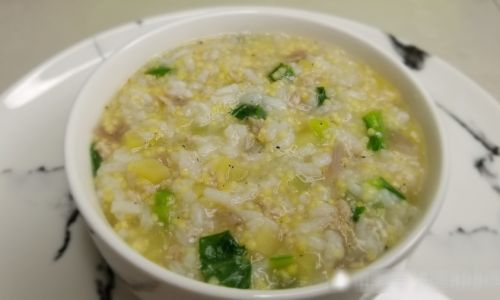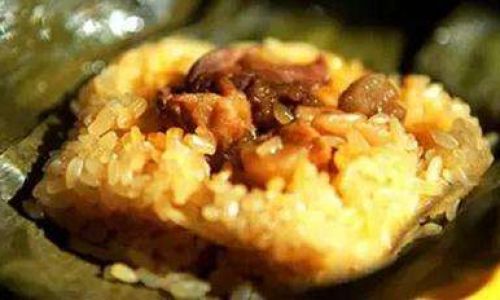Table of content
Introduction
Feeding an infant is a delicate task that requires utmost care and precision. As babies transition from breast milk or formula to solid foods, introducing them to nutritious and easy-to-digest meals becomes crucial. Baby porridge, or baby cereal, is often the first solid food introduced to infants, typically around 4 to 6 months of age. It serves as an excellent starting point for their journey into the world of solid foods, providing essential nutrients while being gentle on their developing digestive systems.
In this comprehensive guide, we will explore how to make nutritious baby porridge at home. We’ll delve into the benefits of homemade baby porridge, the ingredients you’ll need, step-by-step preparation methods, tips for enhancing its nutritional value, and safety considerations. By the end, you’ll be equipped with the knowledge and skills to create delicious and nutritious meals for your little one.
The Benefits of Homemade Baby Porridge
Homemade baby porridge offers several advantages over store-bought options. Here are some key benefits:

-
Control Over Ingredients: When you make baby porridge at home, you have complete control over the ingredients. This allows you to use fresh, organic produce and avoid any unwanted additives, preservatives, or sugars that may be present in commercial products.
-
Customizable Nutrition: You can tailor the porridge to meet your baby’s specific nutritional needs. For instance, you can add iron-rich ingredients like spinach or beef to boost their iron intake, or incorporate vegetables and fruits to provide a range of vitamins and minerals.
-
Cost-Effective: Making baby porridge at home is generally more cost-effective than buying pre-packaged cereal. By using basic pantry staples and seasonal produce, you can create large batches at a fraction of the cost.
-
Cultural and Familial Ties: Preparing baby porridge allows you to incorporate cultural traditions and familial recipes into your child’s diet. This can help foster a sense of belonging and cultural identity from a young age.
Ingredients for Nutritious Baby Porridge
The basic ingredients for baby porridge are simple and easy to find. Here’s a list of essentials:
-
Grains: Rice, oats, barley, or quinoa are common choices. Each grain offers unique nutritional benefits. For example, rice cereal is often recommended as a first food due to its low allergenicity, while oats provide fiber and essential fats.
-
Water or Formula: Use boiled, filtered water or your baby’s usual formula to cook the grains. Breast milk can also be used, but it may make the porridge thicker and more difficult to mix.
-
Fruits and Vegetables: Pureed fruits and vegetables can be added to enhance flavor and nutrition. Good choices include bananas, avocados, sweet potatoes, carrots, and peas.
-
Proteins: Lean meats, poultry, fish, tofu, or legumes can be introduced gradually to provide essential amino acids.
-
Healthy Fats: Avocado, coconut oil, or olive oil can be added in small amounts to provide essential fatty acids.
-
Dairy (Optional): Once your baby is ready, you can introduce yogurt or cheese for additional calcium and protein.
Step-by-Step Preparation Methods
Basic Baby Porridge Recipe
Ingredients:
- 1/4 cup grain (rice, oats, etc.)
- 1 cup water or formula
Instructions:
-
Rinse the Grain: Rinse the grain under cold running water to remove any impurities.
-
Cook the Grain: In a small saucepan, combine the rinsed grain and water or formula. Bring to a boil over medium heat, then reduce the heat to low and simmer, stirring occasionally, until the grain is tender and the liquid is absorbed. This can take anywhere from 10 to 30 minutes depending on the type of grain.
-
Cool and Puree: Once cooked, let the porridge cool slightly. If necessary, puree it using an immersion blender or food processor until it reaches a smooth consistency suitable for your baby’s age and stage of development.
-
Adjust Consistency: Add more water or formula if the porridge is too thick, or cook it longer if it’s too thin.
-
Serve: Serve the porridge warm or at room temperature. You can store any leftover porridge in an airtight container in the refrigerator for up to 24 hours.
Enhanced Nutritional Versions
Iron-Rich Baby Porridge
Ingredients:
- Basic baby porridge recipe
- 1/2 cup cooked spinach or kale, pureed
- 1 tablespoon beef or chicken broth (optional for added flavor)
Instructions:
-
Prepare the basic baby porridge recipe.
-
While the grain is cooking, puree the cooked spinach or kale until smooth.
-
Once the grain is tender, stir in the pureed greens and broth (if using). Continue to cook for a few minutes until well combined.
-
Cool, puree if necessary, and serve.

Veggie-Packed Baby Porridge
Ingredients:
- Basic baby porridge recipe
- 1/2 cup cooked and pureed carrots or sweet potatoes
- 1/4 cup cooked and pureed peas
Instructions:
-
Prepare the basic baby porridge recipe.
-
While the grain is cooking, puree the cooked carrots or sweet potatoes and peas until smooth.
-
Once the grain is tender, stir in the pureed vegetables. Continue to cook for a few minutes until well combined.
-
Cool, puree if necessary, and serve.
Fruit-Flavored Baby Porridge
Ingredients:
- Basic baby porridge recipe
- 1/2 ripe banana, mashed
- 1/4 cup pureed berries (such as blueberries or strawberries)
Instructions:
-
Prepare the basic baby porridge recipe.
-
While the grain is cooking, mash the banana and puree the berries until smooth.
-
Once the grain is tender, stir in the mashed banana and pureed berries. Continue to cook for a few minutes until well combined.
-
Cool, puree if necessary, and serve.
Tips for Enhancing Nutritional Value
-
Rotate Ingredients: To ensure your baby gets a variety of nutrients, rotate the grains, fruits, vegetables, and proteins you use in their porridge. This helps prevent nutrient deficiencies and exposes them to different flavors and textures.
-
Introduce New Ingredients Gradually: When introducing new foods, do so one at a time and wait a few days before introducing another. This helps you identify any potential food allergies or sensitivities.
-
Use Whole Grains: Whenever possible, use whole grains instead of refined grains. Whole grains retain more of their natural nutrients and fiber, which are beneficial for your baby’s digestion and overall health.
-
Add Fortified Ingredients: Look for fortified grains and dairy products that contain added nutrients like iron, vitamin D, and calcium. These can help meet your baby’s growing nutritional needs.
-
Incorporate Superfoods: Consider incorporating superfoods like chia seeds, flaxseeds, or hemp seeds into your baby’s porridge. These foods are packed with essential nutrients like omega-3 fatty acids, fiber, and protein.
Safety Considerations
-
Age Appropriateness: Always check with your baby’s healthcare provider before introducing solid foods. They will advise you on the best time to start and which foods are safe for your baby’s age and stage of development.
-
Allergy Awareness: Be aware of common food allergies and introduce new foods one at a time to monitor for any adverse reactions.
-
Proper Cooking: Ensure all grains and vegetables are cooked thoroughly to reduce the risk of choking and to make the food easier to digest.
-
Storage and Handling: Store homemade baby porridge in an airtight container in the refrigerator for no longer than 24 hours. Reheat it gently before serving to avoid burning your baby’s mouth.
-
Hygiene: Wash your hands, utensils, and cooking surfaces thoroughly before and after preparing baby food to prevent the spread of germs.
Conclusion
Making nutritious baby porridge at home is a rewarding experience that allows you to provide your baby with a healthy and personalized diet. By following the guidelines and recipes outlined in this guide, you can create delicious and nutritious meals that support your baby’s growth and development. Remember to always consult with your baby’s healthcare provider before introducing new foods and to prioritize safety and hygiene throughout the preparation process. With love, care, and a bit of creativity, you can craft meals that your baby will love and thrive on.






0 comments